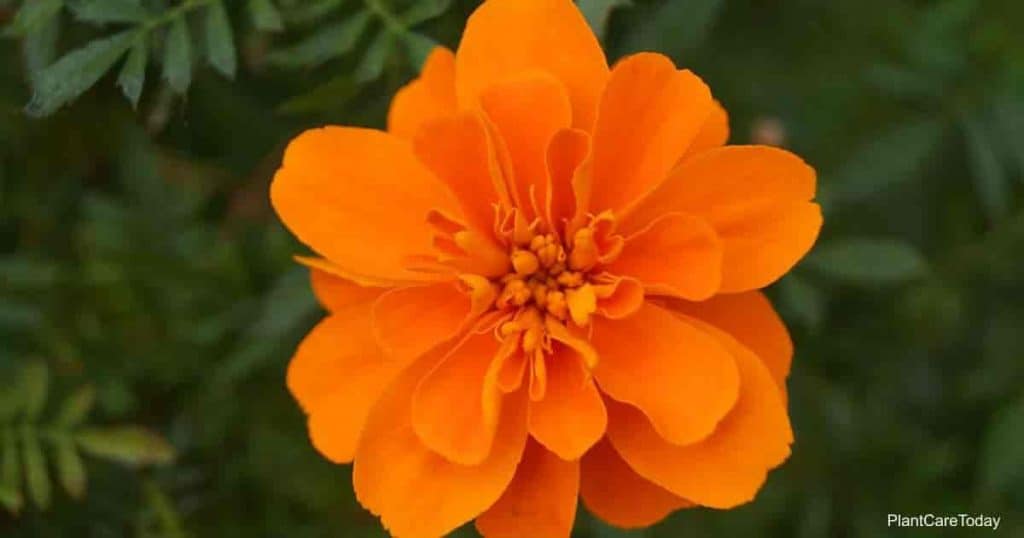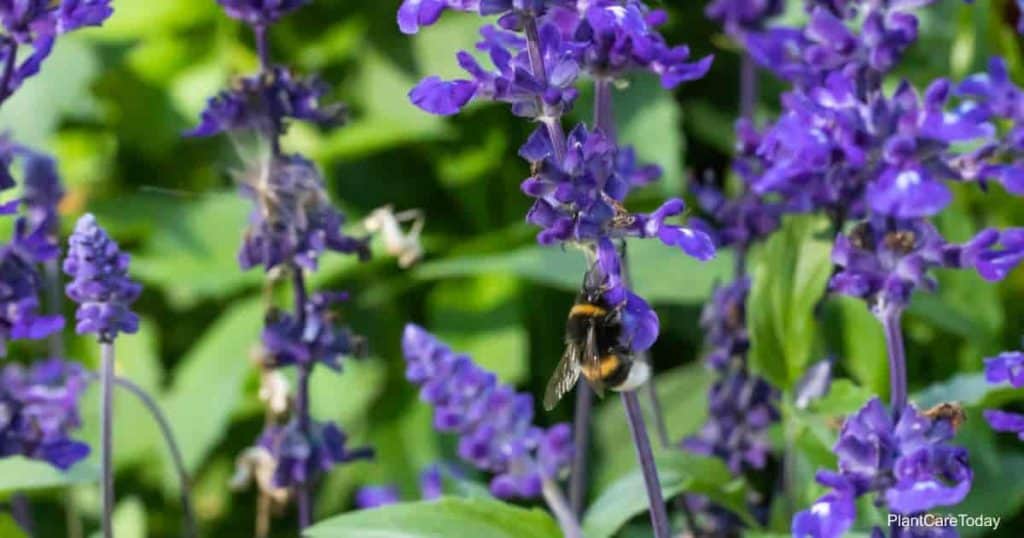Zinnias are a lovely, easy-to-grow genus of annual plants which provide a touch of color to any space they’re planted in. However, you might not have known that the many varieties and types of zinnias are excellent companion plants.

Companion planting is the practice of planting multiple different plants together that benefit one another.
Also known as complimentary gardening, this practice reduces the need for weeding, pesticides, and other typical gardening chores while sometimes even resulting in bigger, better blooms or produce.
Zinnia Companion Plants
While colorful zinnia flowers look great on their own, planting them among other flowers or crop plants can have a lot of benefits.

Here’s what you can expect from your zinnias, as well as awesome crop and flower plants that make great companions.
Zinnia’s Qualities As A Companion Plant
First and foremost, you might have noticed zinnias get a lot of bug attention.
- They produce a lot of nectar, attracting bees, butterflies, and hummingbirds.
- They also attract many beneficial insects, such as ladybugs and parasitic wasps.
These insects are natural predators of a wide range of pests, including:
- Aphids
- Mealybugs
- Spider mites
A third and less mentioned benefit: Zinnias can be used as a sacrificial plant for several beetles, drawing their attention so your more vulnerable plants can remain safe.
Fourth, zinnias have a decent height but are single-stemmed, allowing them to shade smaller plants without gently blocking sunlight.
Finally, the attractive blooms distract both you and any creatures that might otherwise be going after those plants going to seed hiding behind the zinnia border.

Zinnia Companions In Crop Gardens
One of the great benefits of growing zinnias in a vegetable garden is that they can tolerate a wide pH range and numerous soil conditions (as long as they’re well-draining).
There are few known crop plants that aren’t compatible with zinnias, but quite a few benefit from the insects your zinnias will attract.
Some examples are:
- Asparagus
- Beans
- Cauliflower
- Cucumbers
- Kale
- Lettuce
- Luffa
- Melons
- Peppers
- Potato
- Tomato
NOTE: Zinnias are best used with beans as a sacrificial plant.

Simply plant them away from the beans; Japanese beetles or similar bean eaters will go after the flowers instead. Try neem oil as another control option.
Neem Oil is our FAVORITE natural organic insecticide. Control aphids, mealybugs, plant scale, Japanese Beetles and more. It can also be used as a soil drench.
Different Ways To Incorporate Zinnias With Vegetables
Before we get into flower gardens, let’s look at a few ways you can integrate zinnias with your vegetable crops.

By using one or more of these methods, you can get the absolute best from that garden spot in terms of attraction and function.
Borders And Corners
When aiming to create a good pest barrier, having a border of zinnias creates a wonderful border barrier that also provides a nice transition between the garden plot and the ground outside.

It’s a beautiful garden border option for surrounding a round garden plot. Similarly, you can place small groups of zinnias at the corners of angular plots.
This helps frame the garden plot and gives multiple points of interest to draw away the unwanted attention of garden pests.
Rogue Blooms
Whether on their own or in conjunction with border or corner plantings, a few rogue zinnias placed randomly among your crops can bring some attractive spots of color.

More importantly, the single blooms will be less likely to draw unwanted pests into the garden while encouraging pollinators to venture further from the borders.
Potted Plants
Finally, you can slip potted zinnias into your garden. This is a great technique for both crop and flower gardens where the soil quality or pH might not be compatible.

The container creates a physical barrier, allowing two different ecosystems to coincide in one place safely. It also means you can swap out the zinnias with other beneficial plants as needed to maintain a longer bloom cycle.
Finally, containers make it much easier to dispose of sacrificial plants when they become infested, as you can gently lift the infected plant away without disturbing the bugs infesting it.
Zinnia Companion Plants In Flower Gardens
Of course, people generally prefer to place flowers with flowers, and zinnias also work their magic here. Zinnias can be a protective border for pest-prone plants such as roses, a great alternative to marigolds.

However, there are times when visual interest is the true goal, and there are some perfect choices for people who mainly want great aesthetics.
The following are just a small selection of potential companions that look amazing beside zinnias.
Cosmos
The large, saucer-shaped flowers of a cosmos are the perfect counterpart to zinnias. As with zinnias, cosmos attract pollinators and are often used as sacrificial plants.

Even better, these two plants can be combined with others in this list to make an excellent bouquet.
Dahlias
You can’t go wrong with a dahlia and zinnia combination, be it in the garden or a planter. These two flowering plants have similar, yet distinct blooms.

Even better, dahlias are sturdy, upright plants with double blooms to complement the singles of a zinnia.
Purple Fountain Grass
Purple fountain grass is one of the more attractive and less utilized ornamental grasses. Fountain grass is fast-growing grass is both deer and drought-resistant, growing to as much as 5’ feet tall.

The gentle arch of the stems at full height and red to burgundy plumes that appear at various points of the growing season makes for an excellent background for the smaller zinnia, especially with a medium-sized foliage plant in between.
Salvia
Better known as sage, there are many different types of salvia, many of which are great in the kitchen and excellent at repelling pests.

There are also many ornamental versions to choose from, but any salvia will give you some lovely bell-shaped flowers in the autumn.
Salvia and zinnias are excellent container friends as well.
Toothpickweed (Visnaga Daucoides)
Finally, let’s go with a more unusual choice, a graceful little plant commonly called the toothpick plant.
If you’ve ever seen yarrow or Queen Ane’s lace, you’ll be familiar with the umbel of tiny white flowers.
This plant is a great choice because its umbels complement your zinnias without competing for attention.
When both in bloom, it will appear as though the zinnia blooms are floating amidst a small sea of lace.

